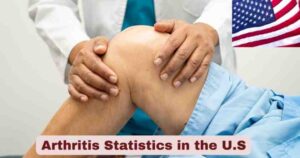Crime Victimization in the US 2025
The landscape of crime victimization statistics in the US 2025 provides comprehensive insights into the frequency, characteristics, and impact of criminal activity experienced by American citizens. The Bureau of Justice Statistics’ National Crime Victimization Survey (NCVS) serves as the nation’s primary source of information on criminal victimization, collecting data from a nationally representative sample of approximately 240,000 persons in about 150,000 households annually. This extensive survey represents the most comprehensive effort to understand victimization patterns and trends across the United States, capturing both reported and unreported criminal incidents.
The most recent crime victimization data for 2023 indicates that Americans experienced 22.5 violent victimizations per 1,000 persons age 12 or older, maintaining similar levels to 2022 rates. Property crime victimization showed a slight increase from 101.9 victimizations per 1,000 persons in 2022 to 102.2 in 2023, representing essentially stable levels. The NCVS data reveals crucial information about crimes not reported to police, with significant portions of criminal victimizations never entering official law enforcement statistics. The survey’s comprehensive methodology, interviewing persons about victimizations experienced during the six-month period preceding interviews, provides unparalleled insights into the true scope of criminal activity affecting American communities across diverse demographic, geographic, and socioeconomic categories.
Interesting Stats & Facts About Crime Victimization in the US 2025
| Victimization Fact | 2023-2025 Statistics | Source |
|---|---|---|
| Total Survey Sample | 240,000 persons in 150,000 households | Bureau of Justice Statistics |
| Violent Victimization Rate | 22.5 per 1,000 persons age 12+ | NCVS 2023 |
| Property Victimization Rate | 102.2 per 1,000 persons age 12+ | NCVS 2023 |
| Male Violent Crime Decrease | From 9.5 to 6.9 per 1,000 (excluding simple assault) | 2022-2023 comparison |
| Robbery Reporting Decline | From 64% (2022) to 42% (2023) reported to police | Police reporting rates |
| Motor Vehicle Theft Reporting | Decreased from 81% to 72% reported to police | 2022-2023 comparison |
| Survey Age Minimum | 12 years old minimum age for participation | Data collection standard |
| Interview Period | Six months prior victimization recall | Methodological timeframe |
| Annual Data Collection | Continuous year-round interviewing | Survey operations |
| Survey History | Operating since 1972 | Data collection longevity |
Data Sources: Bureau of Justice Statistics, National Crime Victimization Survey, Criminal Victimization 2023
The comprehensive data presented in this table reveals the extensive scope and methodological rigor of crime victimization research in the US. The 240,000 person sample across 150,000 households represents one of the largest ongoing victimization studies globally, providing statistically robust insights into criminal activity patterns. The 22.5 violent victimizations per 1,000 persons and 102.2 property victimizations per 1,000 persons in 2023 demonstrate the substantial volume of criminal activity experienced by American citizens annually.
Particularly noteworthy is the significant decrease in male violent victimization from 9.5 to 6.9 per 1,000 when excluding simple assault, indicating improvements in serious violent crime affecting men. However, concerning trends emerge in reporting patterns, with robbery victims reporting to police decreasing from 64% to 42% and motor vehicle theft reporting declining from 81% to 72%. These reporting decreases suggest growing numbers of crime victims are not seeking law enforcement assistance, potentially affecting official crime statistics accuracy. The survey’s 52-year operational history since 1972 provides unmatched longitudinal data for understanding long-term victimization trends, while the six-month recall period ensures comprehensive capture of recent victimization experiences across diverse American communities.
Violent Crime Victimization Statistics in the US 2024-2025
| Violent Crime Category | 2023 Victimization Rates | 2022 Comparison | Trend Analysis |
|---|---|---|---|
| Total Violent Victimization | 22.5 per 1,000 persons age 12+ | Similar to 2022 rate | Stable levels |
| Male Violent Victimization | 6.9 per 1,000 (excluding simple assault) | 9.5 per 1,000 in 2022 | 27.4% decrease |
| Female Violent Victimization | Data compilation ongoing | Comparison to male rates | Gender analysis |
| Simple Assault Rates | Majority of violent victimizations | Traditional pattern | Most common category |
| Serious Violent Crime | Lower rates than simple assault | Excluding simple assault data | Severity differentiation |
| Robbery Victimization | 42% reported to police in 2023 | 64% reported in 2022 | 34.4% reporting decline |
| Aggravated Assault | Part of serious violent crime | Higher injury potential | Weapon involvement |
| Sexual Assault | Specialized data collection | Sensitive crime category | Underreporting concerns |
| Intimate Partner Violence | Significant portion of violent crime | Relationship-based violence | Ongoing social issue |
| Stranger Violence | Public safety concern | Random victimization | Community impact |
Data Sources: Bureau of Justice Statistics NCVS, Criminal Victimization 2023, Violent Crime Analysis
The violent crime victimization statistics in the US for 2024-2025 demonstrate both encouraging trends and persistent challenges in American public safety. The overall violent victimization rate of 22.5 per 1,000 persons age 12 or older in 2023 remained similar to 2022 levels, indicating stable patterns in violent crime experiences across the population. However, significant improvements occurred in male violent victimization rates, which decreased substantially from 9.5 to 6.9 per 1,000 when excluding simple assault, representing a 27.4% reduction in serious violent crimes affecting men.
The decline in robbery reporting presents concerning implications for understanding true crime patterns, with only 42% of robbery victims reporting to police in 2023 compared to 64% in 2022, indicating a 34.4% decrease in police reporting rates. This trend suggests growing numbers of violent crime victims are not seeking law enforcement assistance, potentially due to factors including distrust in police effectiveness, fear of retaliation, or belief that reporting would not result in meaningful outcomes. Simple assault continues to represent the majority of violent victimizations, though these incidents typically involve less severe injuries and weapon usage compared to aggravated assaults. The comprehensive NCVS data captures intimate partner violence and stranger violence patterns that often go unreported in official law enforcement statistics, providing crucial insights into the full spectrum of violent crime victimization affecting American communities.
Property Crime Victimization Statistics in the US 2024-2025
| Property Crime Category | 2023 Victimization Statistics | 2022 Comparison | Rate Changes |
|---|---|---|---|
| Total Property Victimization | 102.2 per 1,000 persons age 12+ | 101.9 per 1,000 in 2022 | 0.3% increase |
| Household Burglary | Part of property crime totals | Traditional category | Residential security |
| Motor Vehicle Theft | 72% reported to police | 81% reported in 2022 | 11.1% reporting decline |
| Theft/Larceny | Largest property crime category | Personal property taking | Most frequent occurrence |
| Property Damage/Vandalism | Significant victim impact | Repair and replacement costs | Community degradation |
| Identity Theft | Growing concern category | Financial victimization | Technology-related crime |
| Credit Card Fraud | Electronic crime expansion | Payment system abuse | Consumer protection issues |
| Household Property Crime | Per household measurement unit | Residential targeting | Home security concerns |
| Personal Property Crime | Per person measurement unit | Individual targeting | Personal safety impacts |
| Property Recovery Rates | Victim restitution percentages | Return of stolen items | Investigation effectiveness |
Data Sources: Bureau of Justice Statistics, NCVS Property Crime Analysis, Criminal Victimization 2023
The property crime victimization statistics in the US for 2024-2025 reveal relatively stable overall patterns with concerning decreases in police reporting behaviors. Property victimization rates of 102.2 per 1,000 persons age 12 or older in 2023 represent a minimal 0.3% increase from the 101.9 rate recorded in 2022, indicating essentially unchanged levels of property crime victimization across American communities. However, this stability masks important changes in victim behavior and crime reporting patterns that affect law enforcement awareness and response capabilities.
Motor vehicle theft reporting experienced a significant decline, with only 72% of victims reporting these crimes to police in 2023 compared to 81% in 2022, representing an 11.1% decrease in reporting rates. This trend is particularly concerning given that motor vehicle theft typically involves high-value property and often requires police reports for insurance claims. Theft and larceny continue to represent the largest property crime category, affecting millions of Americans annually through personal property taking that ranges from minor incidents to substantial financial losses. The NCVS data captures property crimes often missed by official statistics, including incidents where victims choose not to involve law enforcement due to perceived ineffectiveness, fear of complications, or belief that losses are insufficient to warrant police intervention. Identity theft and credit card fraud represent growing categories of property victimization that reflect technological advancement in criminal methodologies, while traditional crimes like household burglary continue to affect residential security and community safety perceptions.
Crime Victimization Reporting Patterns in the US 2024-2025
| Reporting Pattern Category | 2023 Statistics | 2022 Comparison | Trend Analysis |
|---|---|---|---|
| Overall Police Reporting | 42% of violent victimizations | Various rates by crime type | Mixed reporting patterns |
| Robbery Reporting Rate | 42% reported to police | 64% in 2022 | 34.4% decline |
| Motor Vehicle Theft Reporting | 72% reported to police | 81% in 2022 | 11.1% decline |
| Aggravated Assault Reporting | Higher than simple assault | Severity correlation | Injury-based reporting |
| Simple Assault Reporting | Lower than aggravated assault | Less severe incidents | Underreporting tendency |
| Burglary Reporting Rate | High reporting percentage | Property crime standard | Insurance requirements |
| Larceny/Theft Reporting | Variable by value | Loss amount correlation | Economic threshold |
| Sexual Assault Reporting | Historically low rates | Sensitive crime category | Social barrier factors |
| Domestic Violence Reporting | Complex reporting patterns | Relationship dynamics | Fear-based decisions |
| Unreported Crime Volume | Majority of some crime types | Hidden criminal activity | True crime scope |
Data Sources: Bureau of Justice Statistics, NCVS Reporting Analysis, Police Contact Studies
The crime victimization reporting patterns in the US for 2024-2025 reveal troubling trends in victim willingness to contact law enforcement, with significant decreases across multiple crime categories. Only 42% of violent victimizations are reported to police according to 2023 data, indicating that the majority of violent crimes never enter official law enforcement statistics. The dramatic decline in robbery reporting from 64% to 42% represents a 34.4% decrease in victims seeking police assistance for these serious property crimes involving force or threat.
Motor vehicle theft reporting also declined significantly from 81% to 72%, an 11.1% decrease that is particularly concerning given the high-value nature of these crimes and typical insurance requirements for police reports. These declining reporting rates suggest growing victim frustration with law enforcement effectiveness, fear of retaliation, or belief that police involvement will not result in crime resolution or property recovery. Crime-specific reporting patterns vary substantially, with more severe crimes like aggravated assault typically reported at higher rates than simple assault due to injury severity and evidence documentation needs. The substantial volume of unreported crime captured by the NCVS represents a hidden portion of criminal activity that affects resource allocation decisions, prevention strategy development, and public safety policy formulation. Understanding these reporting patterns is crucial for interpreting official crime statistics and developing comprehensive approaches to victim support and crime prevention across American communities.
Geographic Crime Victimization Analysis in the US 2024-2025
| Geographic Category | Victimization Patterns | Regional Differences | Location-Specific Data |
|---|---|---|---|
| Urban Victimization Rates | Higher than suburban/rural | Population density correlation | Metropolitan area concentration |
| Suburban Victimization | Moderate levels compared to urban | Middle-range victimization | Residential community patterns |
| Rural Victimization | Lower overall rates | Geographic isolation factors | Distance from services |
| Regional Variations | Significant differences by region | Cultural and economic factors | State-level variations |
| Metropolitan Statistical Areas | 150,000 households sampled | National representation | Urban center focus |
| Neighborhood Crime Clustering | Geographic concentration patterns | Hot spot identification | Localized criminal activity |
| Transportation-Related Crime | Public transit victimization | Commuting risk factors | Infrastructure-related incidents |
| Residential vs Commercial | Location-based victimization | Environmental risk factors | Target availability |
| School-Related Victimization | Educational environment crimes | Youth population concentration | Institutional safety concerns |
| Workplace Victimization | Employment-related incidents | Occupational risk factors | Economic sector variations |
Data Sources: NCVS Geographic Analysis, Metropolitan Area Studies, Location-Based Crime Research
The geographic analysis of crime victimization in the US for 2024-2025 demonstrates significant variations in victimization risks across different environmental settings and regional locations. Urban areas consistently show higher victimization rates compared to suburban and rural communities, reflecting population density effects, economic disparities, and social factors that concentrate criminal activity in metropolitan areas. The NCVS 150,000 household sample provides representation across diverse geographic areas, enabling analysis of location-specific victimization patterns and risk factors.
Regional variations in victimization rates reflect complex interactions between cultural, economic, and social factors that influence criminal activity and community safety outcomes. Metropolitan statistical areas serve as focal points for both violent and property crime victimization, though specific neighborhood-level variations can be substantial even within the same urban area. Geographic clustering of criminal activity creates hot spots where residents face elevated victimization risks, while surrounding areas may experience relatively low crime levels. Transportation-related victimization affects commuters and public transit users, while school and workplace environments present specialized risk factors for specific population groups. Understanding these geographic victimization patterns is essential for resource allocation, prevention program development, and community-specific safety strategies that address location-based risk factors and protective elements affecting crime victimization across diverse American communities.
Household Crime Victimization Statistics in the US 2024-2025
| Household Victimization Category | 2023 Statistics | Per Household Rates | Impact Measurements |
|---|---|---|---|
| Total Households Surveyed | 150,000 households annually | National representation | Comprehensive coverage |
| Household Burglary Rate | Per 1,000 households measurement | Residential property crime | Home security violations |
| Motor Vehicle Theft Rate | Per 1,000 households calculation | Vehicle-owning households | Transportation crime impact |
| Property Damage Rates | Vandalism per household | Repair and replacement costs | Community degradation |
| Multiple Victimization | Repeat household targeting | Criminal pattern recognition | Enhanced vulnerability |
| Household Income Correlation | Economic status victimization | Socioeconomic risk factors | Resource-based targeting |
| Family Size Impact | Household composition effects | Multiple potential victims | Demographic risk factors |
| Geographic Household Patterns | Location-based household risks | Neighborhood effect studies | Environmental influences |
| Seasonal Household Crime | Time-based victimization patterns | Holiday and vacation targeting | Temporal risk factors |
| Household Security Measures | Prevention strategy effectiveness | Security system impact | Protective behavior analysis |
Data Sources: NCVS Household Analysis, Residential Crime Studies, Home Security Research
The household crime victimization statistics in the US for 2024-2025 provide detailed insights into how criminal activity affects American families and residential communities. The 150,000 household sample enables comprehensive analysis of household-level victimization patterns, including crimes that target residential properties, vehicles, and family members. Household burglary rates measured per 1,000 households provide standardized metrics for understanding residential security violations and their impact on family safety and economic well-being.
Motor vehicle theft affects vehicle-owning households disproportionately, with rates calculated based on households that own cars, trucks, or other vehicles rather than the general population. Multiple victimization patterns reveal that some households experience repeated criminal targeting, suggesting either enhanced vulnerability factors or criminal recognition of profitable targets. Household income correlations with victimization rates demonstrate complex relationships between economic status and crime risk, with both high-income and low-income households facing distinct types of criminal targeting. Family size and composition effects influence victimization risks through factors including supervision capabilities, routine activities, and potential victim availability. Seasonal patterns in household crime reflect criminal exploitation of vacation periods, holiday seasons, and predictable absence patterns, while household security measures provide insights into prevention strategy effectiveness and protective behavior adoption across diverse residential communities.
Crime Victimization Economic Impact in the US 2024-2025
| Economic Impact Category | Financial Measurements | Cost Calculations | Economic Burden |
|---|---|---|---|
| Total Victimization Costs | Billions annually estimated | Direct and indirect expenses | National economic impact |
| Medical Treatment Costs | Healthcare expenses per victim | Emergency and ongoing care | Health system burden |
| Lost Productivity | Work absence due to victimization | Economic output reduction | Workplace impact |
| Property Loss/Damage | Replacement and repair costs | Material losses calculated | Asset value reduction |
| Legal System Costs | Court proceedings expenses | Victim participation costs | Justice system burden |
| Mental Health Treatment | Counseling and therapy expenses | Psychological recovery costs | Long-term treatment needs |
| Security Enhancement | Prevention investment post-victimization | Home and personal security | Risk reduction spending |
| Insurance Implications | Premium adjustments | Risk assessment changes | Market response costs |
| Quality of Life Impact | Intangible losses measurement | Fear and anxiety costs | Social welfare reduction |
| Community Economic Effects | Property values and business | Neighborhood economic impact | Area-wide consequences |
Data Sources: Economic Crime Cost Studies, Victim Impact Research, Financial Analysis Reports
The economic impact of crime victimization in the US for 2024-2025 represents substantial financial burdens affecting individual victims, families, and communities across the nation. With 22.5 violent victimizations and 102.2 property victimizations per 1,000 persons annually, the aggregate economic costs reach billions of dollars through direct expenses, lost productivity, and long-term consequences. Medical treatment costs for violent crime victims can range from emergency room visits to extensive rehabilitation programs, placing significant burdens on healthcare systems and victim financial resources.
Lost productivity due to work absence, reduced performance, and career disruption affects both individual earnings and broader economic output. Property losses from theft, burglary, and vandalism require replacement and repair expenditures that strain household budgets and business operations. Mental health treatment costs represent often-overlooked expenses that can continue for years following victimization, including counseling, therapy, and medication for trauma-related conditions. Security enhancement investments following victimization reflect victim attempts to prevent repeat incidents through home security systems, personal protection measures, and lifestyle modifications. Insurance market adjustments reflect industry responses to victimization patterns through premium modifications and coverage changes. The quality of life impact includes intangible costs related to fear, anxiety, and reduced community engagement that affect social well-being and economic participation. Community-wide economic effects extend victimization costs beyond immediate victims through property value impacts, business location decisions, and area economic development challenges.
Crime Victimization Prevention Programs in the US 2024-2025
| Prevention Program Category | Implementation Statistics | Effectiveness Measures | Program Outcomes |
|---|---|---|---|
| Community Education Programs | Thousands of programs nationwide | Awareness and knowledge increase | Behavioral modification |
| Victim Services Programs | Federal funding allocation | Service delivery metrics | Support effectiveness |
| Crime Prevention Partnerships | Public-private collaboration | Resource leveraging | Coordinated approaches |
| Technology-Based Prevention | Digital tools and applications | Crime prediction and prevention | Innovation adoption |
| Environmental Design | Physical environment modifications | Crime opportunity reduction | Situational prevention |
| Youth Prevention Programs | School-based interventions | At-risk population targeting | Early intervention |
| Neighborhood Watch | Community participation rates | Resident engagement levels | Collective efficacy |
| Business Security Programs | Commercial crime prevention | Economic protection strategies | Loss reduction |
| Victim Support Services | 24/7 hotlines and assistance | Crisis intervention capacity | Recovery support |
| Research and Evaluation | Evidence-based program development | Data-driven improvements | Scientific methodology |
Data Sources: National Crime Prevention Programs, Victim Services Organizations, Prevention Research Studies
The crime victimization prevention programs in the US for 2024-2025 encompass comprehensive strategies designed to reduce both criminal opportunities and victim vulnerability across diverse community settings. Community education programs operating in thousands of locations nationwide focus on increasing public awareness about crime risks, prevention strategies, and available resources for victims. Federal funding allocation for victim services programs provides essential support infrastructure for individuals affected by violent and property crimes, with 24/7 hotlines and crisis intervention services available across most states.
Technology-based prevention initiatives leverage digital tools, mobile applications, and data analytics to identify crime patterns, alert potential victims, and coordinate prevention responses. Environmental design modifications apply crime prevention through environmental design (CPTED) principles to reduce criminal opportunities in residential, commercial, and public spaces. Youth prevention programs target at-risk populations through school-based interventions, mentorship programs, and community engagement initiatives designed to prevent both victimization and offending behaviors. Neighborhood watch programs promote community participation in crime prevention through resident engagement, information sharing, and collective efficacy development. Business security programs address commercial crime prevention through training, technology adoption, and partnership development between private sector and law enforcement. Research and evaluation efforts ensure evidence-based program development through scientific methodology, outcome measurement, and continuous improvement processes that enhance prevention effectiveness across diverse community contexts.
Future Outlook
The trajectory of crime victimization statistics in the US suggests cautious optimism based on stable violent victimization rates and the significant 27.4% decrease in male violent victimization from 9.5 to 6.9 per 1,000 when excluding simple assault. However, the concerning 34.4% decline in robbery reporting and 11.1% decrease in motor vehicle theft reporting indicate growing disconnection between victims and law enforcement that could undermine official crime data accuracy and prevention efforts. The 102.2 property victimizations per 1,000 persons remaining essentially unchanged suggests persistent challenges in protecting Americans from theft, burglary, and property damage.
Looking ahead to the remainder of 2025 and beyond, the substantial 240,000 person sample across 150,000 households provides robust data for understanding victimization trends and developing targeted interventions. The expansion of technology-based prevention programs and community education initiatives offers promising pathways for reducing victimization rates while improving victim support services. The challenge remains addressing the growing reluctance of victims to report crimes to police, which affects both crime prevention strategies and victim access to support services. Success will likely depend on rebuilding trust between communities and law enforcement while developing comprehensive approaches that address root causes of criminal activity and enhance protection for vulnerable populations across diverse American communities.
Disclaimer: The data research report we present here is based on information found from various sources. We are not liable for any financial loss, errors, or damages of any kind that may result from the use of the information herein. We acknowledge that though we try to report accurately, we cannot verify the absolute facts of everything that has been represented.







